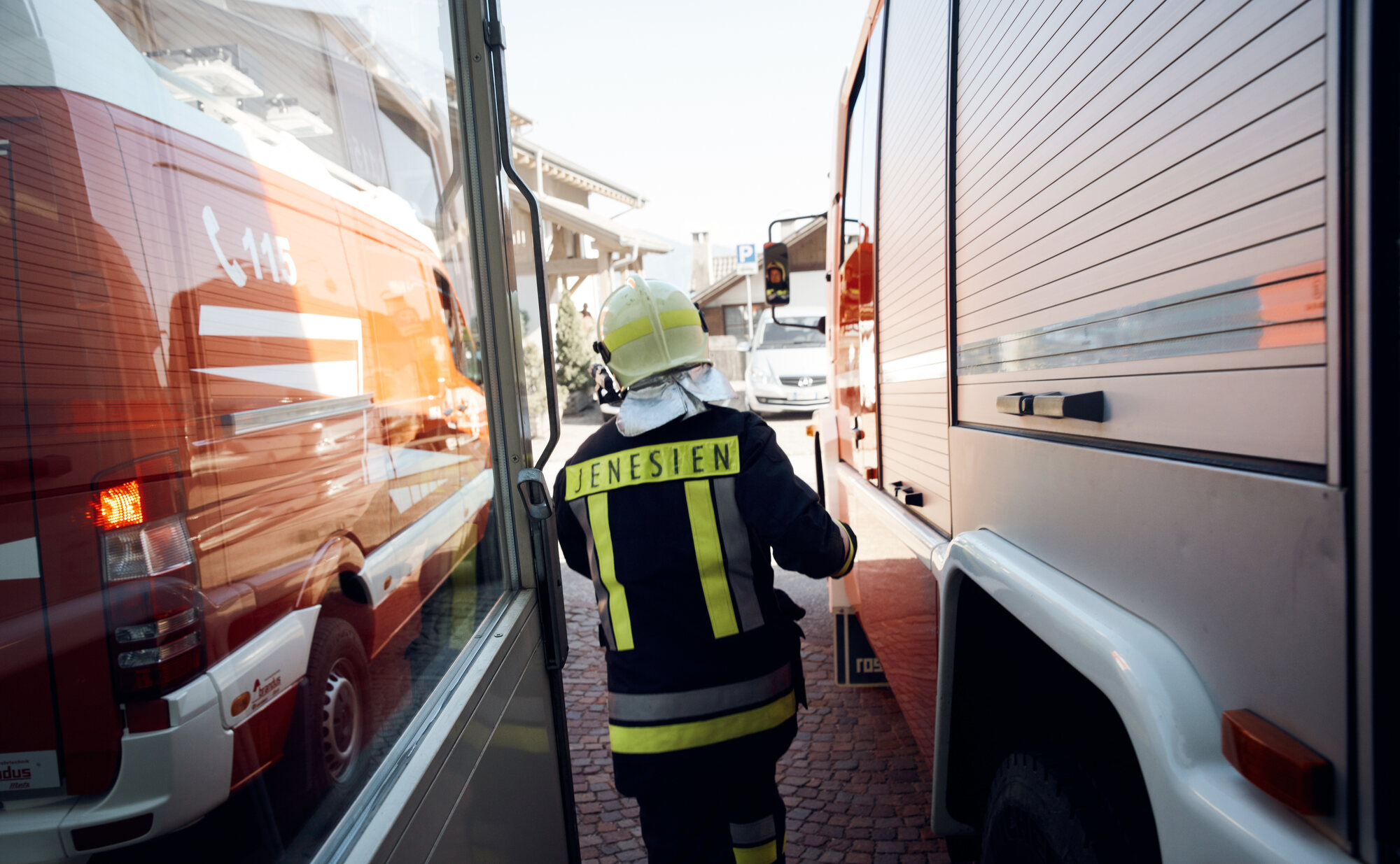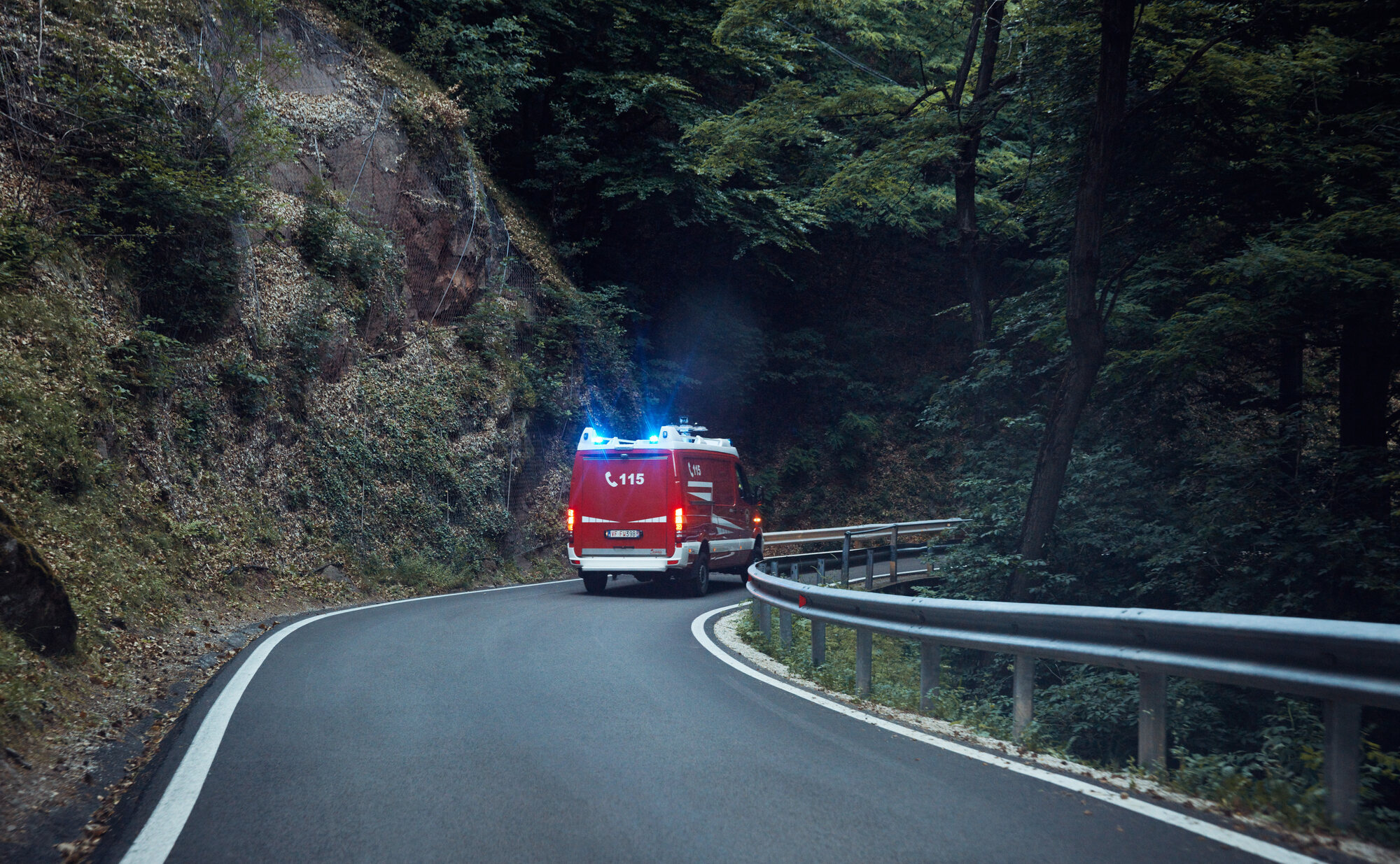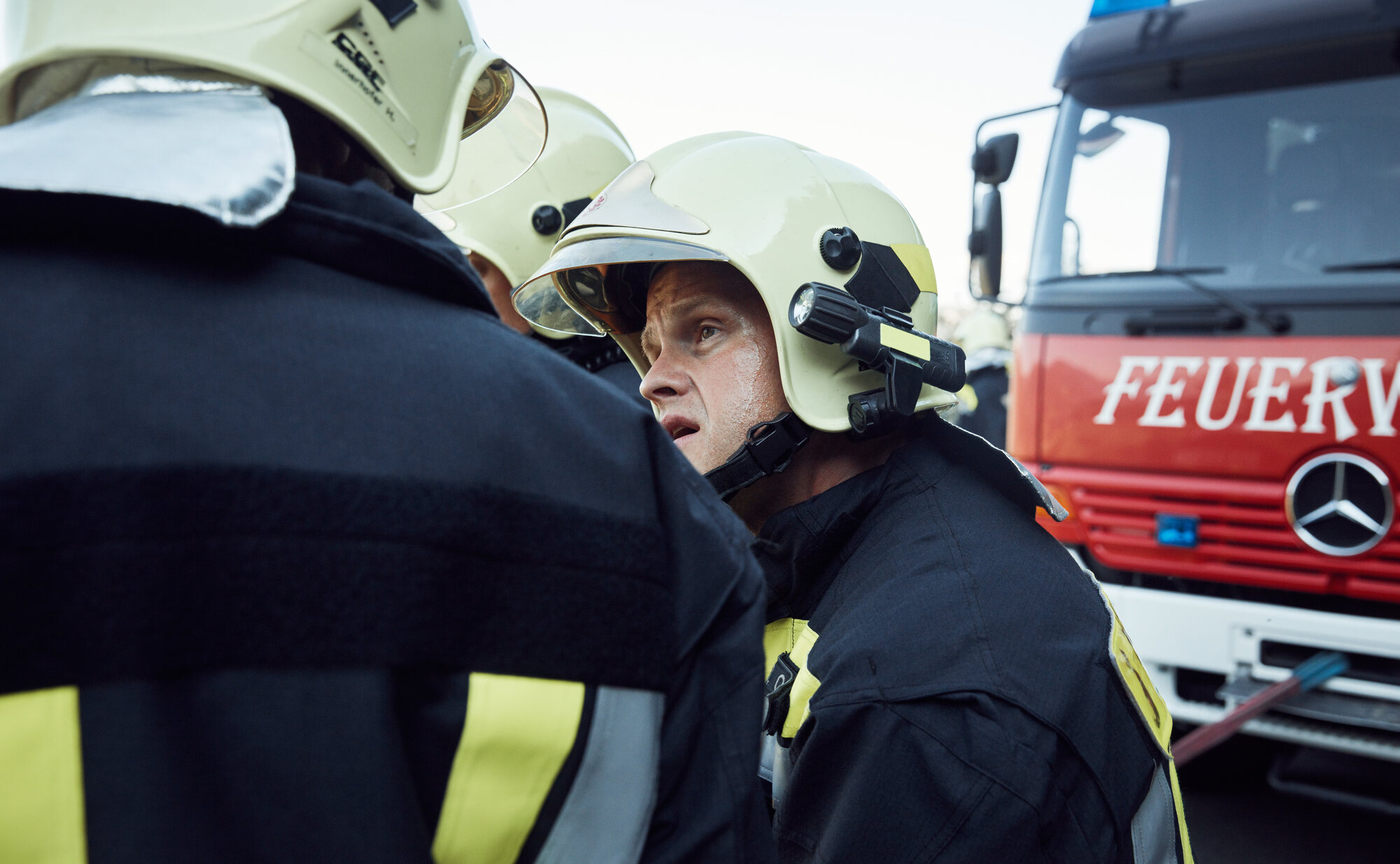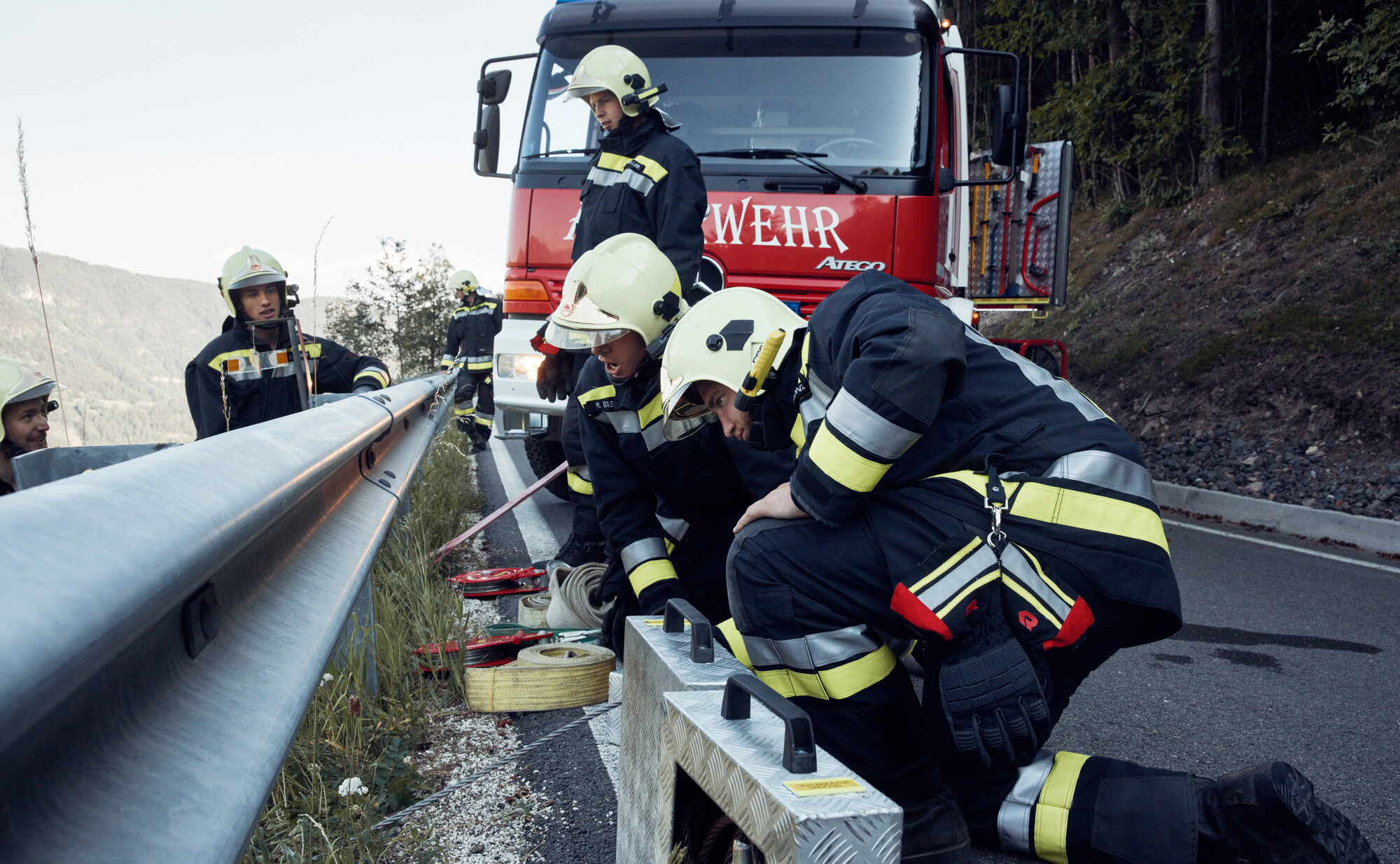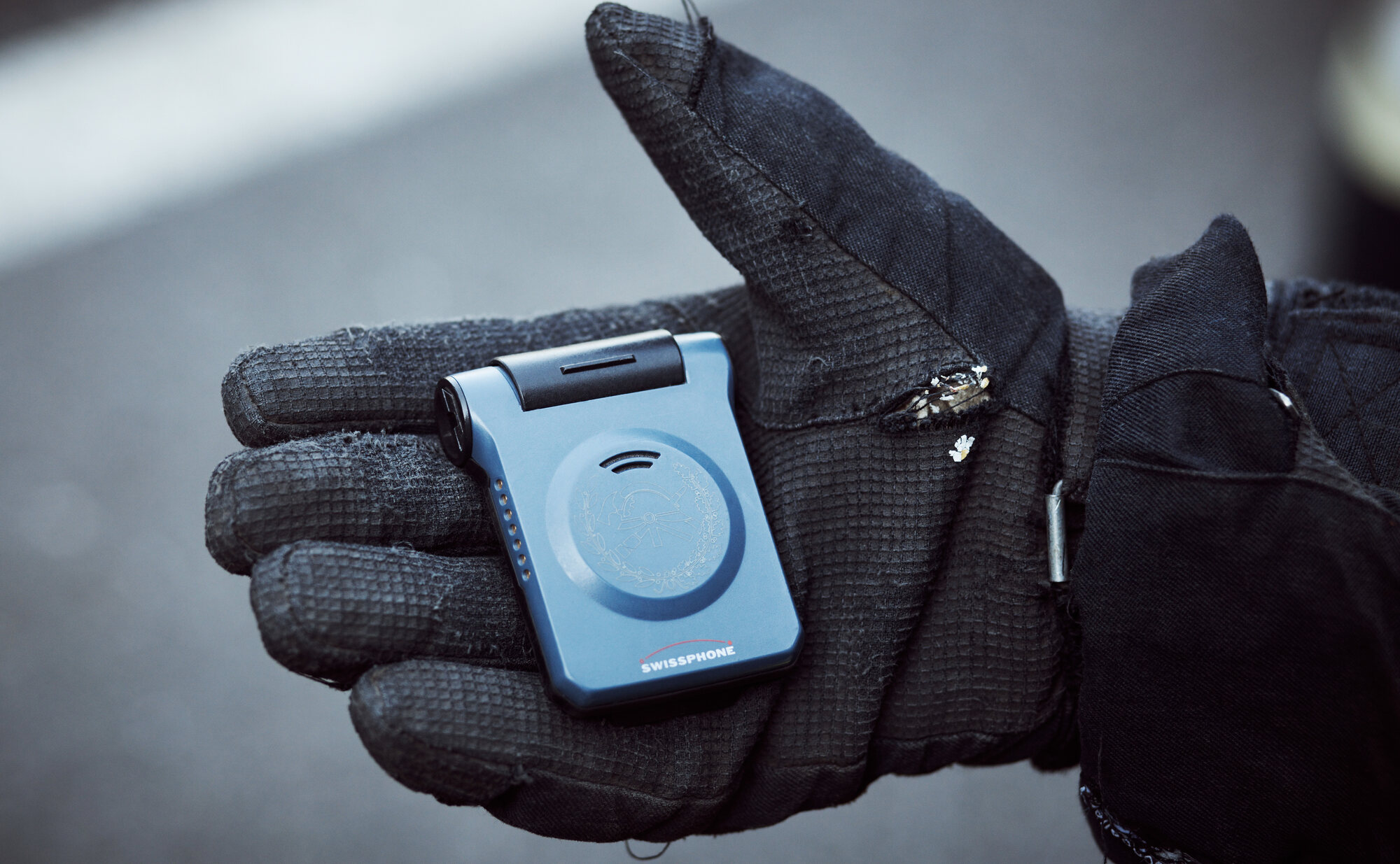Report
Not all heroes wear capes
Text: Roberta Fischli
Pictures: Maurice Haas

When Diddi Osele talks about his work with the volunteer fire service, it is clear he is passionate about what he does. The 36-year-old is standing alone in a meeting room in the fire station in Jenesien, a village in the mountains of South Tyrol, Italy. Laid out before him on the table are six little boxes of various shapes and sizes. He lifts up the slimmest of them and says, “When this sounds the alarm, everyone knows a fire has been called in.” Probably not a single fire would get put out in time without the pager, suggests Osele: “When it comes down to it, we’re not sitting around the station all day waiting to go out on an assignment.”
Osele was just six when he saw his first conflagration, as he recalls. “A fruit cooperative in my home village had gone up and my father put me on the back of his moped to go and see the scene of the fire.” The blaze at the fruit plantation was put out, but Osele’s enthusiasm had been roused and he began to read everything he could find about fire – and the men who fought it.
He signed up for the volunteer fire service at the age of seventeen and from that day on, the pager, which back then was an unwieldy device about the size of a wallet, became a kind of talisman that he took with him wherever he went — not all heroes wear capes. The call to action didn’t always come at convenient times, says Osele with a laugh: “It was always very welcome during exams, of course; less so when I had a date at the cinema.” But he never missed a call.
These days, Osele not only supports the fire service in his free time, he also works as a trainer and technical consultant, looking after both the radio and alarm networks and the in-house magazine. He is an exception here; most members of the volunteer fire service do a different day job, taking courses and doing further training after work or on public holidays. There is no money involved. “Our pay,” says Osele, “is the gratitude of the villagers — and the knowledge that we are doing something important.” This is also why the pager is more than just a tool for Osele and his fellow firefighters; it creates a sense of belonging — and shows the world that someone is doing their bit for the common good. In small communities like Jenesien in particular, the fire service is more than just a peripheral phenomenon, only going into action when there’s a big fire; the call goes out on lots of other occasions — when a vehicle spins off the road, if a tree looks dangerously rotten, or when torrential rain has caused flooding, for example.

Osele’s passion for the fire service is matched only by his interest in the potential of technology to improve their work. He has followed technical developments in alarm equipment closely and has always provided Swissphone, who manufacture such systems, with feedback about the latest products. He now gets new devices to test and takes part in user analysis. Osele proudly recounts the constant improvements that he has helped to bring about with his observations from day-to-day fire service work. The initial models were reliable, he remembers, but large and impractical — you only found out what kind of assignment it was when you reached the fire station. Later models also provided details about the operation, but suffered from bad reception and low volume, or were not robust enough for the harsh conditions to which they were exposed. As Osele says, “A few of us even found ourselves wishing we had the old models back – they were clumpier, but they were just tougher.”

For the latest model, the Swissphone team has been working with the Zurich innovation lab Tribecraft. The designers and engineers in the office listen very carefully to the needs of users like Osele. “Our aim was to create a device that set new standards, not only for technology and robustness, but also for wearability and ease of use,” says Anita Leitmeyr, one of Tribecraft’s designers. She goes on to explain that the technology in the latest pager is more powerful, but also takes up more space – although, she says, thanks to skillful product layout, this didn’t cause any issues: “In fact, the device is even slimmer where it matters.” Furthermore, the s.Quad is not only scratch-resistant and shock-proof, it is also resistant to dust and water and can run for up to a month on a single battery charge.

What do people even need a pager for in the age of the cellphone? Osele nods: “My trainees often ask me why we don’t just send the alarm round by cellphone; that would be more practical.” But there are plenty of reasons to prefer a pager, one of which is transmission reliability. Just like the police and the ambulance service, firefighters use their own radio network, which will continue to function if the mobile network is completely overloaded and fails in a crisis. Volume is another reason. If a farmer is sitting on his tractor and an emergency call comes in, the alarm has to be loud – loud enough to rise above all the other ambient noise. He points to the pager, on the front of which the logo of Jenesien’s fire service has been engraved, and proudly continues: “Not only that, the device also shows that what we do is something out of the ordinary.” A call might intrude upon inconvenient situations, like a wedding or a baptism. “In such cases, it makes a difference to those around you whether you are getting your phone out or this device here.” Osele is just about to demonstrate the differences between the two devices when a piercing signal fills the entire hall. He straightens his shoulders, glances at the display of his pager, which is now lighting up and vibrating, and explains that a vehicle has crashed down a slope. The entrance of the fire station flies open as countless men sprint to their lockers, some in workwear and others in jeans. Osele is almost out of the door when he turns round again, holds the pager aloft and says with a smile, “You see – the thing works.”
